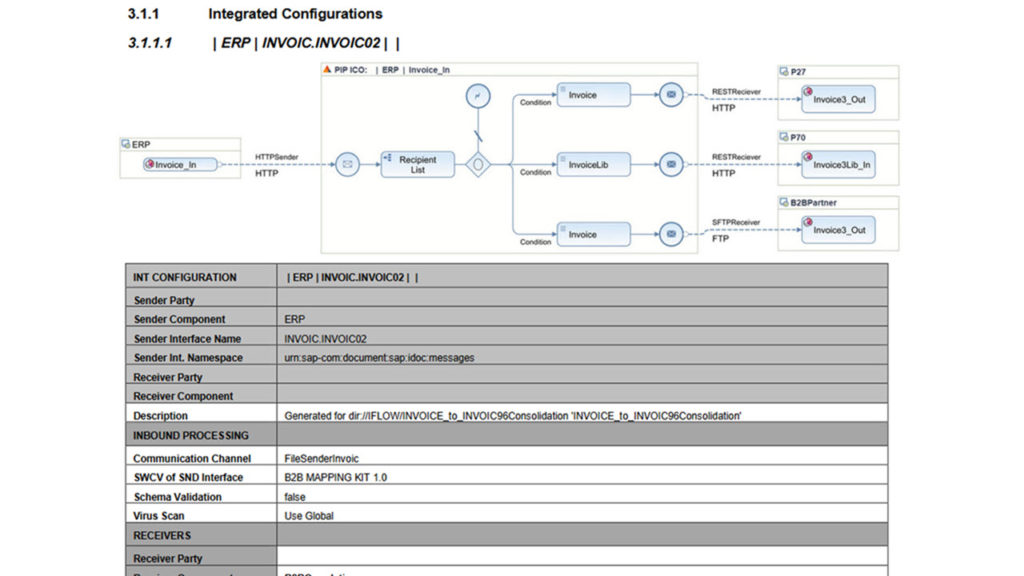Nobody cares about SAP PI/PO interface documentation … do they?
Who really cares about technical interface documentation?
SAP PI/PO developers certainly don’t – they’d rather be doing the real work of solving integration challenges – not wasting hours documenting what has gone into their solutions. And the documentation created is typically incomplete, inconsistent, and quickly out of date. It’s for this reason that most companies using SAP PI/PO don’t even bother with documentation.
So, I guess the answer is ‘of course nobody cares about documenting their interfaces‘?
Well, maybe IT Quality people care about documentation? Their jobs after all depend on ensuring certain best practice processes are being followed – OK, that last comment may be seen as rather cynical – IT Quality is an important function helping to ensure the quality of an organisation’s outputs – quality that directly affects the product or service that is delivered to customers (there are many examples of major corporate disasters when quality management is ignored).
What about functional consultants and business owners – the ones who are defining what is needed from a business perspective? Well, sure, from a functional perspective, they need to clearly define what is required, but technical documentation? Nah, why should they care? Well, what about years after an interface is developed, when changes are required? Well, ok, maybe these people are then interested to know a bit more about how a specific integration solution is working – you cannot change something if you don’t understand how it is working ‘under the hood’. And often the PI/PO specialists that created the solution are long gone.
Oh, and what about your Operations Team? Well, ok, they might appreciate being able to quickly understand how an interface is configured when someone reports it is not working.
If your company is in an industry sector covered by regulatory requirements, for instance by the FAA or the FDA, then maybe you also care about documentation – there you don’t really have a choice. Of course, there is documentation, and then there is documentation. It’s often enough to just tick a box, and say there is ‘some’ level of documentation – not much value in that though.
Are there any other scenarios where good documentation might be useful? Large organisations grow their interfaces over many many years, in a rather ‘organic’ path. They’ve typically had different delivery models during these years, from internal to external partners, often changing their partners several times – there is a certain ‘development debt’ within their thousands of interfaces. So organisations considering harmonization of interfaces would benefit from good documentation. But of course we know that companies don’t really have a business case to re-engineer thousands of interfaces – ‘if it ain’t broke, don’t fix it’.
Well, no harmonization of interfaces is fine – until you are faced with a divestment of part of your organisation, and you need to carve out hundreds of your interfaces. Or, you may be faced with a huge migration project of all of your interfaces to a new platform – whether to SAP Cloud Integration, or even to another integration platform like Mulesoft or Boomi. Then it becomes a little more interesting to understand how your interfaces are working. Without good documentation, you will need a large team of PI/PO resources to help the transition,and it will take much longer.
So yes, unless you’re an IT Quality Manager, or in the operations support team, or a functional consultant and you want to be able to specify changes to an existing interface, or your organisation is in a regulated industry, or you are divesting a part of your organisation, or completely migrating to a new platform, then sure – you should not care about SAP PI/PO interface documentation.
Contact us now for a demo
One huge reason to care about documentation is if you are moving away from SAP PI/PO. With our UDO for SAP PI/PO software you’re able to automatically generate documentation, at the click of a button – which includes SLD, ESR, DIR data and all related mappings for the scenario, ICO or iFlow.
If you’re interested in finding out more about SAP PI/PO automatic interface documentation generation, contact us now, schedule a short demo, and we will arrange for an evaluation version of UDO for to you to try out. You can find us on the SAP Store.
About UDO
UDO runs on your client computer. Its simple to install, easy to use, with configuration taking just minutes.
Using display authorisations, UDO extracts PI/PO interface data via SAP standard APIs and webservices, giving you complete visibility of your PI/PO interface landscape.
UDO is available for releases PI 7.0 to PO 7.50
About Arianim
Arianim is an SAP Silver Partner, and was founded in Basel, Switzerland, in 2012.
Our global customers span three continents and come from diverse industry sectors: Agriscience, Automotive, Chemical, Confectionery, Consumer Goods, Cosmetics, Diagnostics, Electronics, Food Industry, Insurance, Logistics, Pharma, Retail, and Rail Transport authority.

